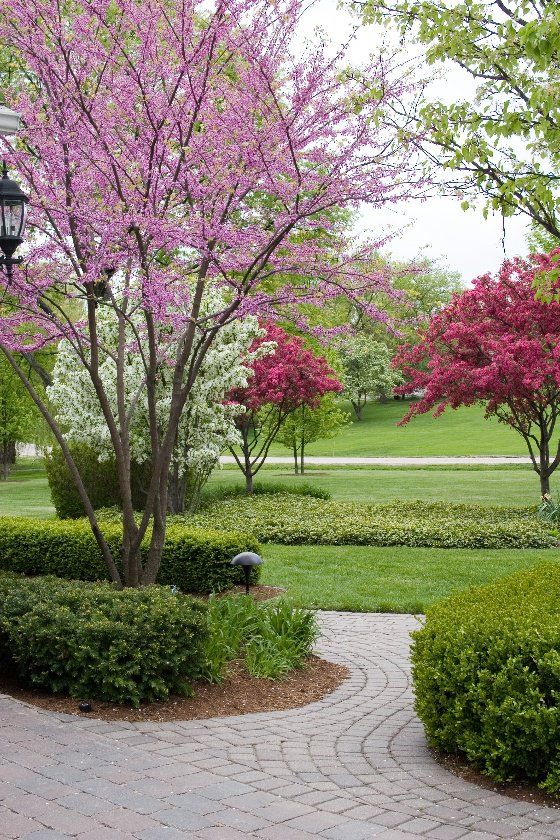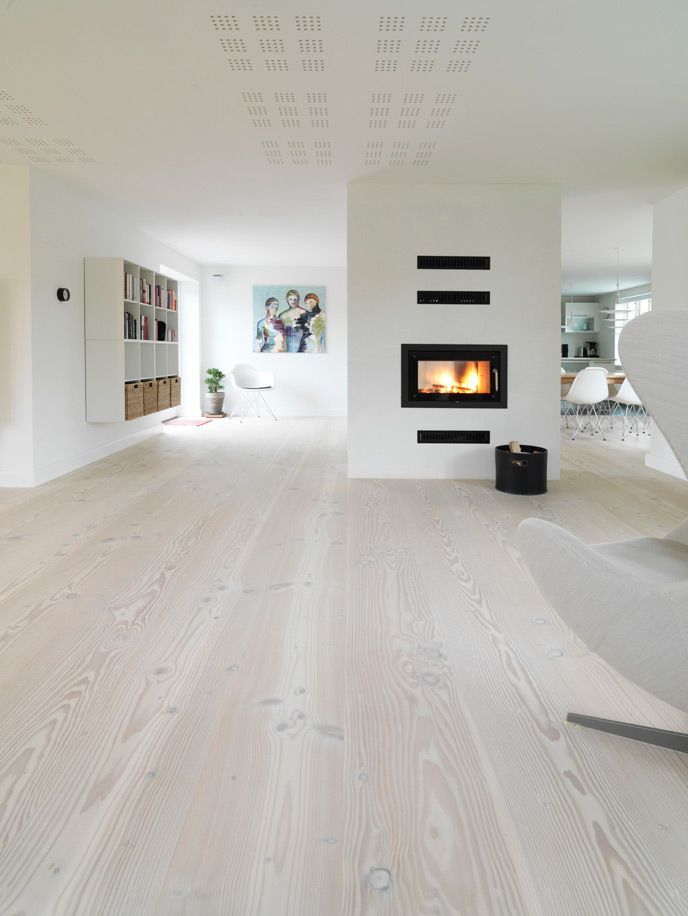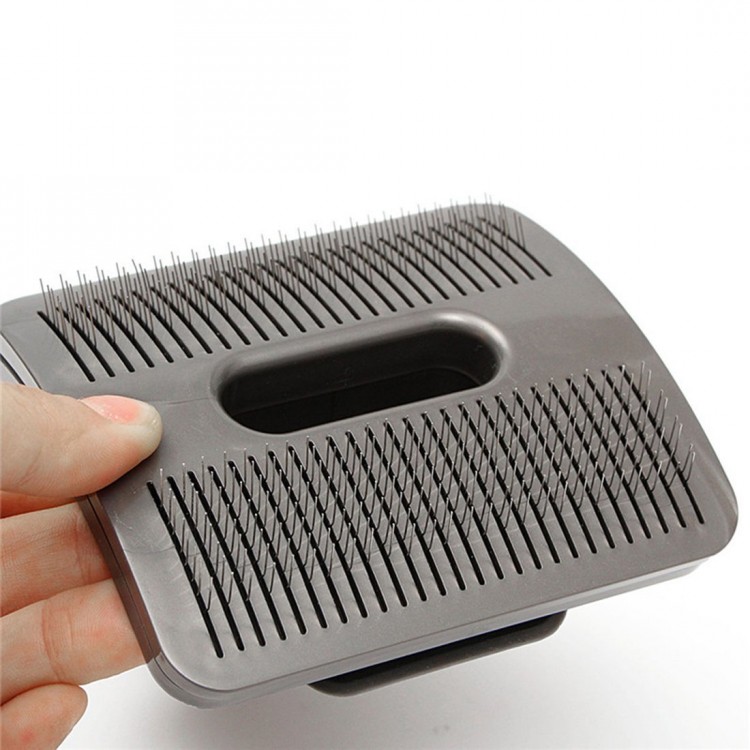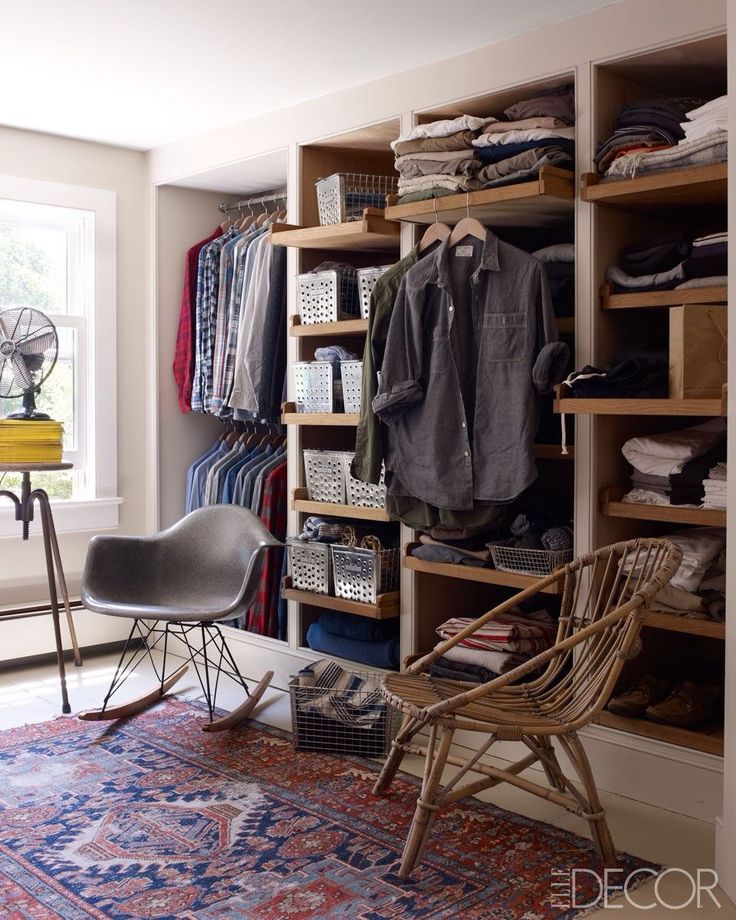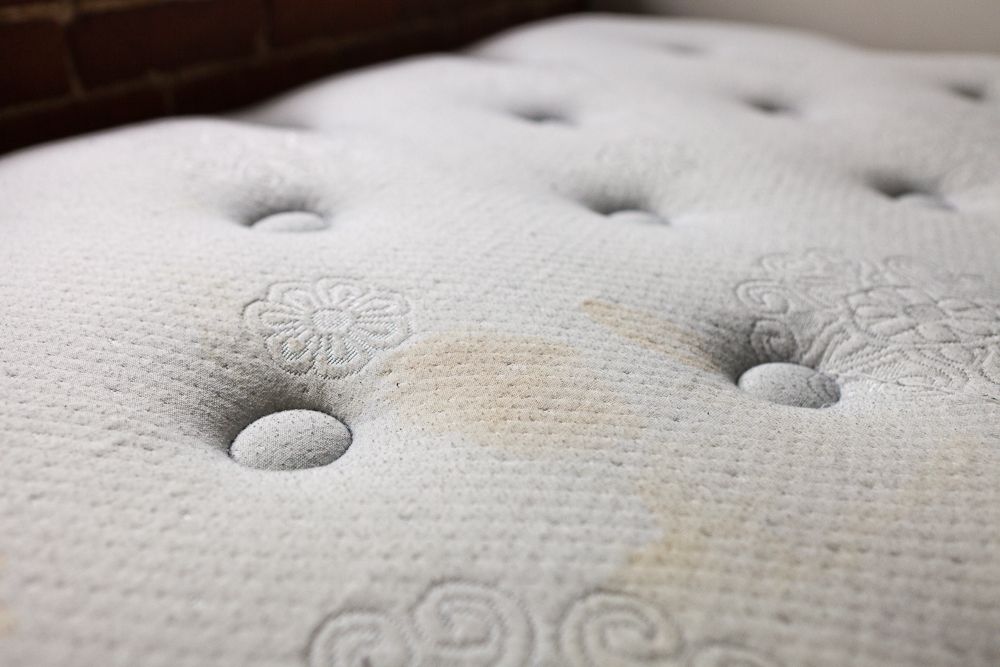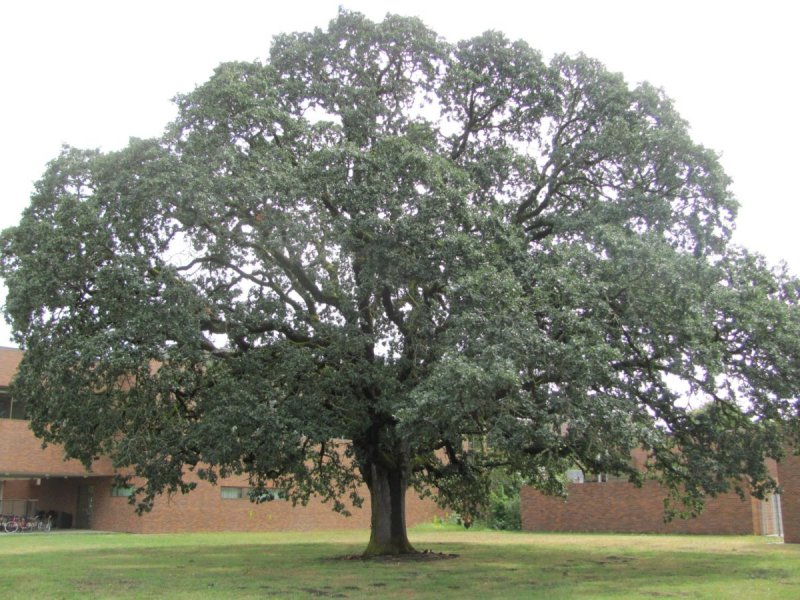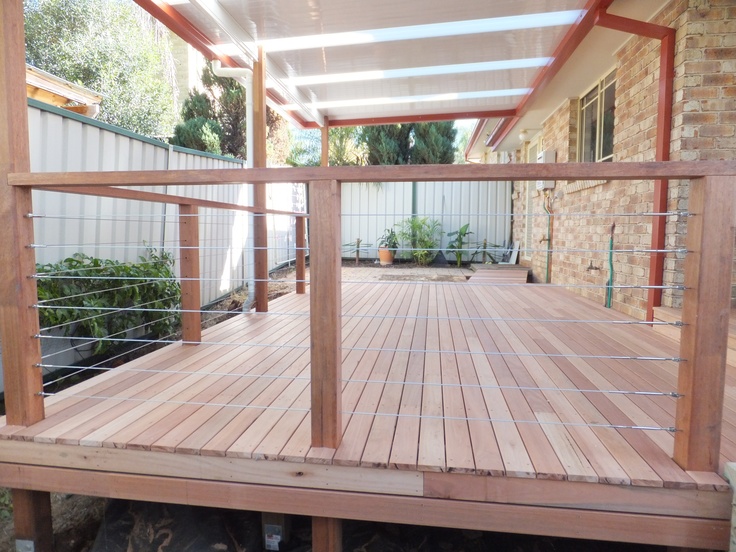Trees for home gardens
Garden Trees: Find the Perfect Tree for Your Home Garden
From maples to magnolias, find the perfect tree for any spot in your garden
Lollipop® crabapple. Photo: Proven Winners.
Finding the right tree for your home garden can be a challenge. Whether you are looking to add a bit of shade to your property or to screen a view of a neighboring home, trees are often the solution. Ornamental trees can also be used to create a focal point in your garden. Fruit trees are also beautiful and can be grown in orchard fashion or incorporated into your garden.
ON THIS PAGE:
- TYPES OF TREES
- DESIGNING WITH TREES
When selecting a tree, you may feel a bit like a kid in a candy store. There are small trees that can be grown in pots if you don’t have a lot of room and large trees more suited for a pastoral setting. Furthermore, there are trees with weeping branches and ones that flower profusely; trees that are tall and narrow and ones that are low and wide; trees that are evergreen and ones that put on an impressive autumn show then drop their leaves. You can get a tree with a single, stout trunk or one with multiple slender trunks. And the list doesn’t stop there.
Popular trees amongst home gardeners include dogwoods, maples, cypresses, cherries, magnolias, birches, crape myrtles, and many more. Use the resources below to determine what types of trees you are attracted to and how to work them into the design of your own garden.
TYPES OF TREES
Trees for Fall Color
Nothing else signals the seasonal shift as beautifully as these native trees.
Trees for Privacy
Add some of these great trees to your landscape for screening and privacy.
Best Small Trees to Grow
Plant smaller trees in your yard that won’t outgrow their space.
Flowering Trees For Residential Gardens
Favorite flowering tree picks for bright color and reliable performance.
Evergreen Trees For Residential Gardens
Modest in size and showy in all seasons, these 12 evergreen trees provide year-round color and structure.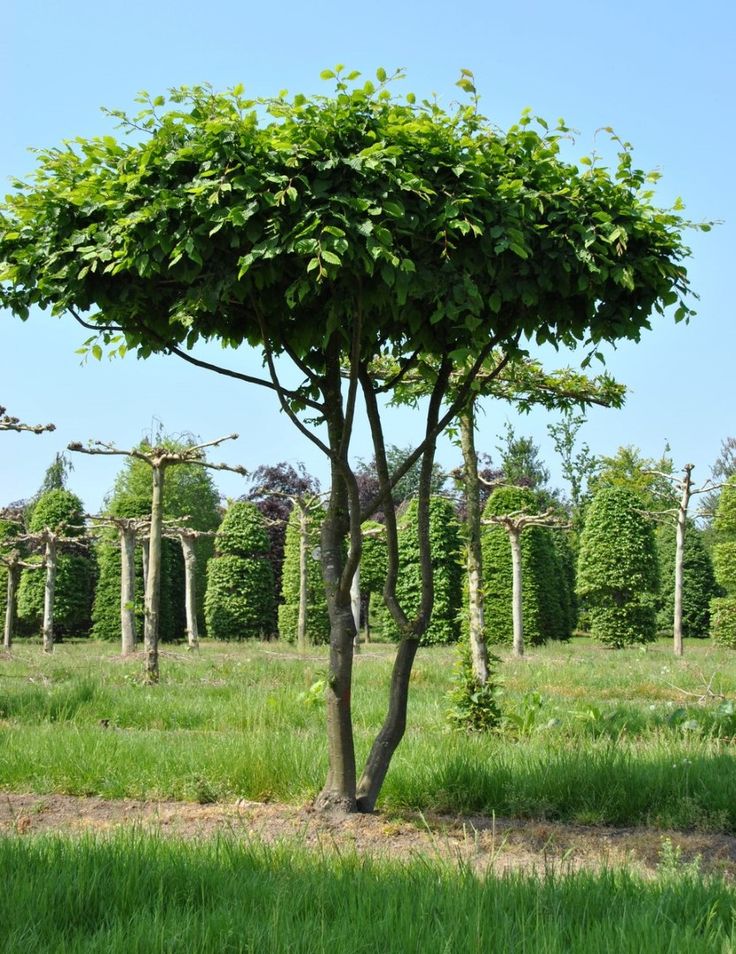
Arborvitae
Discover varieties to try, along with basic care and planting tips.
Birch
How to plant, care for, and use birch trees in your garden.
Conifers
Learn how evergreen trees can be used to create a beautiful backbone for a four-season garden.
Crabapple
Showy spring flowers and brightly colored fruit make these ornamental trees an attractive addition to any garden.
Crape Myrtle
Add a punch of late-summer and fall color with crape myrtle trees.
Eastern Redbuds
Celebrate the end of winter with an explosion of pink blossoms.
Flowering Cherry
Ornamental cherry trees herald the coming of spring with a profusion of pink blossoms.
Flowering Dogwood Trees
America’s most popular native flowering tree thrives in the home garden.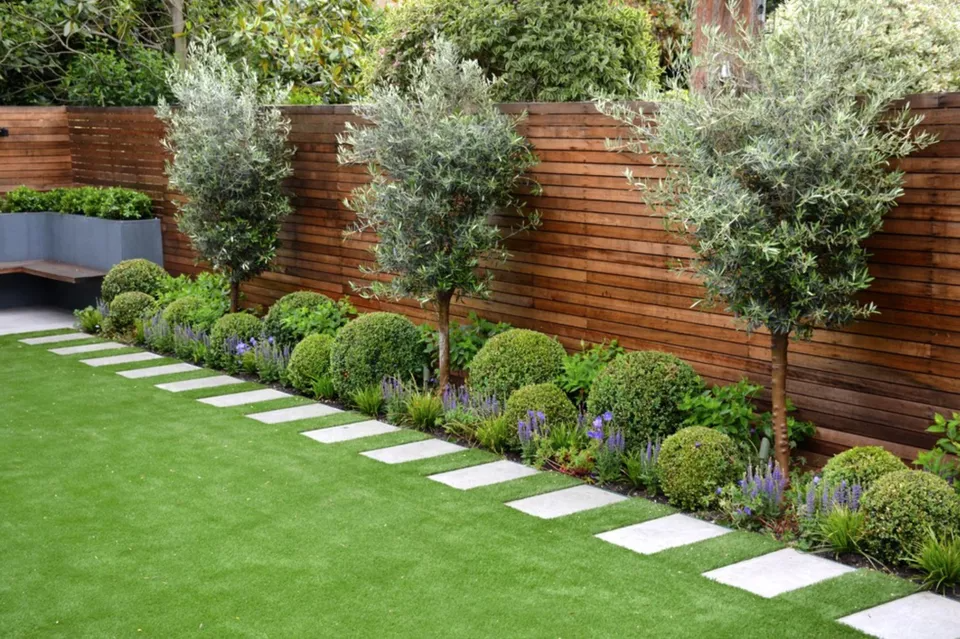
Hawthorn
Multi-seasonal appeal and reliability are hallmarks of this common landscape plant.
Japanese Maple
Nothing beats Japanese maples for center of attention drama and vivid fall color.
Magnolia
How to plant and care for saucer magnolia, southern magnolia, and more.
Olive
Learn the basics and get tips for pruning, harvesting, and overwintering olive trees indoors..
Purple-Leaf Plum
Add a splash of color and contrast to your yard or garden with purple-leaf plum trees.
DESIGNING WITH TREES
Add Color, Texture, & Pattern With Bark
Take a close-up look at the intricate bark of eight trees, and read four tips on how to design with bark.
Espallier Trees for Every Garden
Get recommendations for fruit-bearing and ornamental trees that work great as espaliers, plus tips and tricks for training them.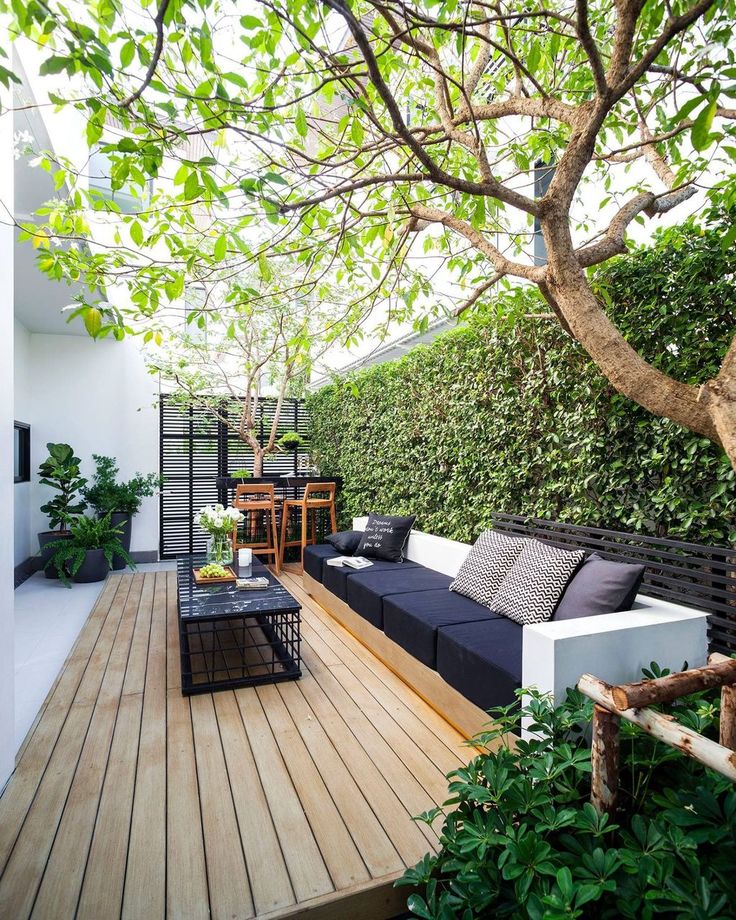
10 Design Ideas for Trees
Discover how to make the most of new and old trees alike.
JOIN 100,000 GARDEN LOVERSSign up for weekly gardening inspiration and design tips
Get plant information, gardening solutions, design inspiration and more in our weekly newsletter.
* Required Fields
We will never sell or distribute your email to any other parties or organizations.
More about the newsletter
- Contact Us
- About Us
- Privacy Policy
- Cookie Policy
- Site Map
- Terms and Conditions
Copyright 2023. All Rights Reserved. Reproduction in whole or in part without permission is prohibited.
Best Trees to Plant - 15 Options for the Backyard
Put Down Some Roots
1/17
Trees add much-needed shade, privacy, color, and value to your backyard. Check out this list of longstanding favorites that you can easily incorporate into your lawn design for stunning results.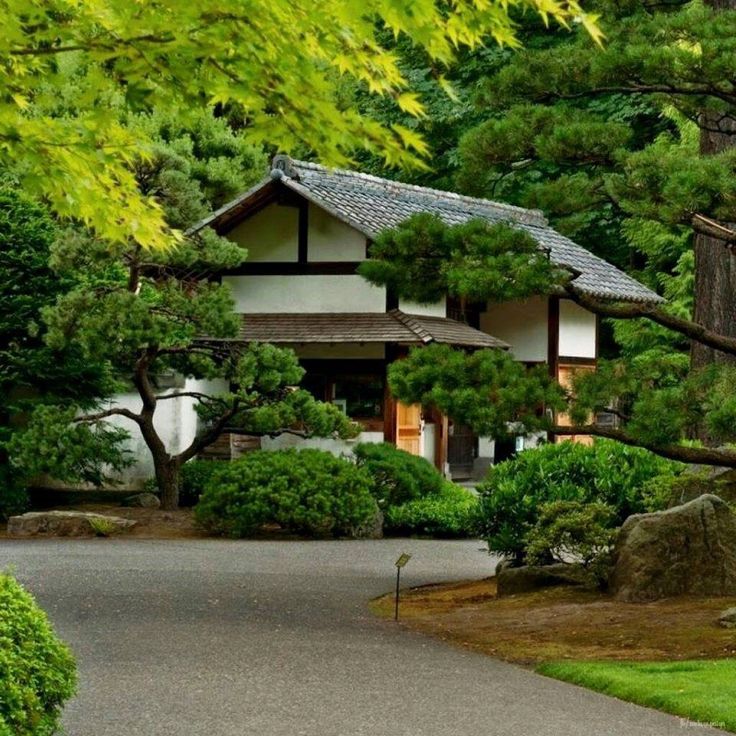
istockphoto.com
Dogwood
2/17
A dogwood tree brings beauty and interest to your backyard all year long. It flowers during spring in a profusion of white, pink, and red blossoms, and then features a lush and compact canopy of foliage in the summer. Most varieties display red foliage in the fall before dropping leaves to show off attractive branching in the winter. There’s a variety for most any zone in the United States, making it no surprise that dogwood is one of the most popular flowering trees in America.
istockphoto.com
Saucer Magnolia
3/17
Emblazoned with pinkish-purple, saucer-shaped flowers in the early spring, saucer magnolia is a backyard showstopper. Growing 20 to 30 feet tall and thriving in Zones 4 through 9, it’s an ornamental that's suitable for almost any yard.
istockphoto.com
Advertisement
Sugar Maple
4/17
If you’re looking to add fall interest and color to your backyard, sugar maple is a great selection.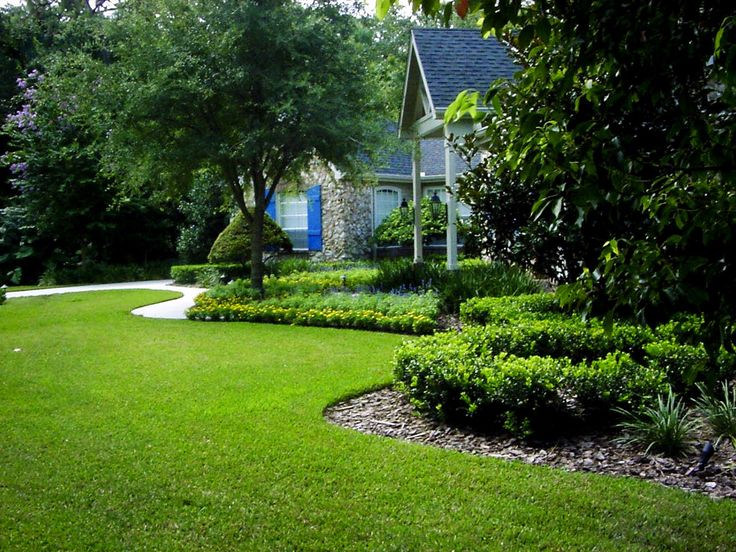 Growing 60 to 75 feet tall, the sugar maple boasts a spreading canopy that puts on a vibrant show in autumn. Considered both a shade and an ornamental tree, it’s no wonder this is an American favorite for the yard.
Growing 60 to 75 feet tall, the sugar maple boasts a spreading canopy that puts on a vibrant show in autumn. Considered both a shade and an ornamental tree, it’s no wonder this is an American favorite for the yard.
istockphoto.com
Silver Maple
5/17
In as little as five years, the silver maple tree will transform your backyard into a shady retreat. The silver undersides of its leaves not only give the silver maple its name, but also lend the tree a shimmering silver appearance in the breeze. It has a vast root system and large trunk, so be mindful to plant it away from sewer lines and walkways.
istockphoto.com
'Green Giant' Arborvitae
6/17
Backyard privacy is important in so many places, but it's especially crucial between houses and yards in housing subdivisions. 'Green Giant' arborvitae has become a popular privacy screen for plenty of reasons: A fast-growing evergreen, it is exceptionally hardy, tolerates almost any soil, and has a beautiful conical shape. It’s great for a hedge, a screen, or as a single specimen in the backyard.
It’s great for a hedge, a screen, or as a single specimen in the backyard.
istockphoto.com
Advertisement
Weeping Cherry
7/17
Few trees are as romantic and elegant as the weeping cherry. With cascading branches festooned with white or pink blossoms in spring, this graceful tree will quickly become the highlight of any backyard. Growing 20 to 30 feet tall, with a 20- to 25-foot spread, it’s small enough to fit almost anywhere.
istockphoto.com
Red Oak
8/17
The red oak gets its name from the brilliant leaf color it shows off in the fall. Popular for both its hardiness and beauty, it’s also a fast grower—reaching up to 75 feet tall in maturity—with a rounded canopy. For larger backyards requiring shade, red oak is an excellent choice.
istockphoto.com
American Holly
9/17
Whether you’re looking to provide evergreen privacy for your yard or enhance your property with a singular ornamental stunner, American holly delivers.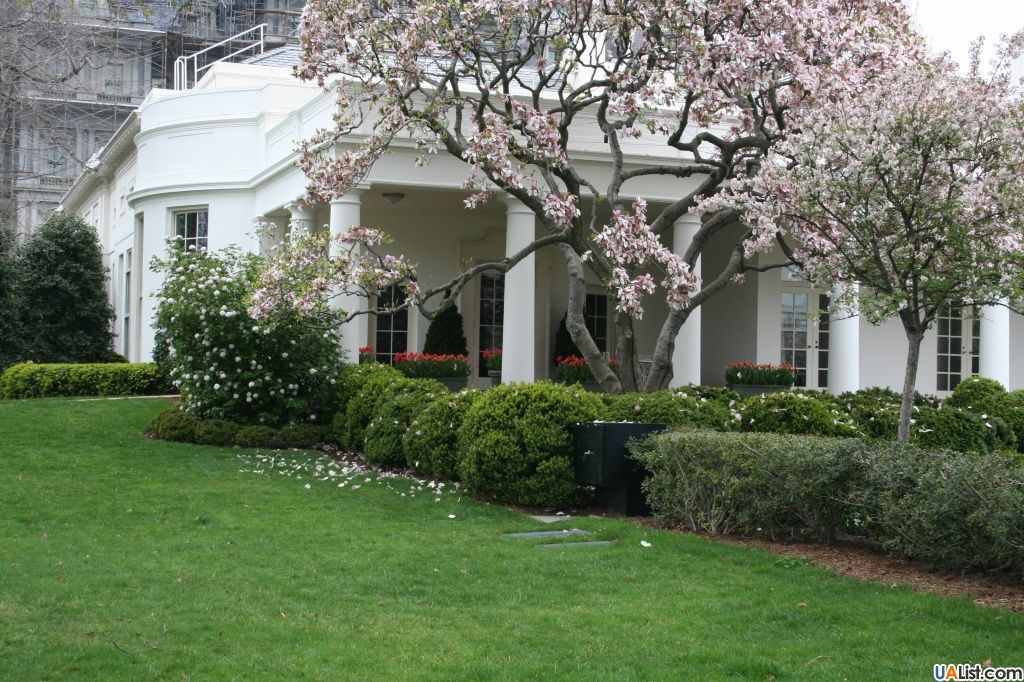 Small, white springtime blooms give way to red berries (actually drupes) in the fall, which remain throughout winter. Holly offers both visual interest and food for wildlife, attracting birds and other small creatures to your yard.
Small, white springtime blooms give way to red berries (actually drupes) in the fall, which remain throughout winter. Holly offers both visual interest and food for wildlife, attracting birds and other small creatures to your yard.
istockphoto.com
Advertisement
Eastern Redbud
10/17
One of the first signs of spring is the brilliant purplish-pink flowering of the eastern redbud, but its branching pattern makes this tree just as beautiful in winter as it is the rest of the year. Growing 20 to 30 feet high, with a 30-foot spread, the eastern redbud will make a dramatic display in any backyard.
istockphoto.com
Tulip Tree
11/17
The tulip tree, liriodendron tulipifera, does double duty as a shade tree and an ornamental. It is bursting with tulip-shaped flowers in springtime and flaunts brilliant yellow leaves in the fall. A fast-growing hardwood, the tulip tree can grow more than two feet in a year. It is has few pest problems and can be grown in Zones 4 through 9, making it an ideal choice for backyards throughout the country, providing they can handle its height.
It is has few pest problems and can be grown in Zones 4 through 9, making it an ideal choice for backyards throughout the country, providing they can handle its height.
istockphoto.com
Paper Birch
12/17
If you are looking for a tree that will quickly make an impression, consider the paper birch. The tall and lean tree is a fast grower that can reach up to 60-feet tall. Its green leaves turn golden yellow in the fall, which creates a contrast with its white peeling bark. Native to northern North America, the paper birch can be grown in zones 2 through 7.
istockphoto.com
Advertisement
Crabapple
13/17
You can enjoy the colors of a crabapple tree practically year round. In spring, flowers bloom in shades of white, pink, or red depending on the variety. At the end of summer you will notice the small apples fruiting, which last into winter even after the vibrant red and orange leaves fall off the tree. Grow it in Zones 4 through 8 in full sun with well-drained soil for a dense tree.
Grow it in Zones 4 through 8 in full sun with well-drained soil for a dense tree.
istockphoto.com
Fringe Tree
14/17
Suitable in hardiness zones 3 through 9, the fringe tree can grow in most of the United States. It makes a showy appearance in early spring with its feathery white flowers, hence its name. While delicate looking, the fringe tree is tolerant to pollution which makes it a great pick if you live in a city or high-traffic area. You can expect the tree to grow 12 to 20 feet tall and wide.
istockphoto.com
Washington Hawthorn
15/17
If you want to attract birds and butterflies to your yard, consider planting a Washington hawthorn. This smaller deciduous tree—it grows no taller or wider than 30 feet—has fragrant flowers in the spring and small red fruit from summer through winter that draw in the wildlife. It also offers gorgeous foliage in the fall.
istockphoto.com
Advertisement
Serviceberry
16/17
Serviceberry, or shadbush, is a small native tree that looks great in a landscape for every season. Tolerant to most conditions, this can be grown in zones 2 through 9. This will be one of the first trees in your yard to flower in early spring, and then fruit berries in summer. In the fall you'll get to enjoy bright red and orange leaves.
Tolerant to most conditions, this can be grown in zones 2 through 9. This will be one of the first trees in your yard to flower in early spring, and then fruit berries in summer. In the fall you'll get to enjoy bright red and orange leaves.
istockphoto.com
A Tree Grows Indoors
17/17
Love the look of these stunning trees? While they’re obviously too large to bring inside, there are plenty of trees that are small and easy to grow in your house.
bobvila.com
Don't Miss!
If you have the money to hire a handyman for every household woe, go ahead. But if you want to hang on to your cash and exercise some self-sufficiency, check out these clever products that solve a million and one little problems around the house. Go now!
90,000 what trees to plant on the site, how to divide the garden in 2022 in 2022 on the GudgrintContent
- Which breeds choose ,
- How many trees will fit on the ,
- landing site
- Fruit Garden
- ,000,000
- How correctly plant trees
- Output
After receiving land for a cottage or dacha, the owners have a problem: what trees to plant on the site? This issue is the second most important after the capital buildings.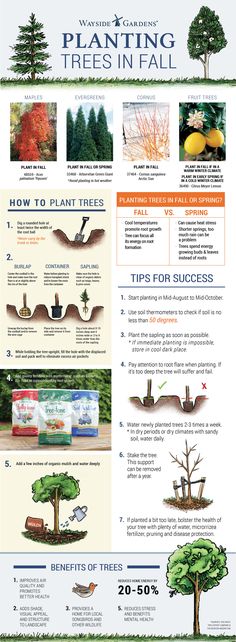 An unsuccessful garden bed or flower bed can be redone next year, and tree crops develop for a long time, you may notice your mistake when the apple tree has already reached a large size and is bearing fruit. Do not rush to the nursery, first of all, open the plan of the territory and mark the landing sites on it. When you are sure that everything is done correctly, you can purchase planting material. nine0003
An unsuccessful garden bed or flower bed can be redone next year, and tree crops develop for a long time, you may notice your mistake when the apple tree has already reached a large size and is bearing fruit. Do not rush to the nursery, first of all, open the plan of the territory and mark the landing sites on it. When you are sure that everything is done correctly, you can purchase planting material. nine0003
Which breeds to choose
Of course, any summer resident wants to have on the site all kinds of plants that exist in the world. You have to limit yourself.
The list of desired cultures will be significantly reduced by the following conditions:
- climate;
- plot size;
- relief features;
- soil;
- the ability to provide complex care.
The successes of breeders make it possible to grow exotic plants in the middle lane, but their possibilities are not unlimited. Palm trees in the open air in the Arctic will not grow, no matter how hard you try.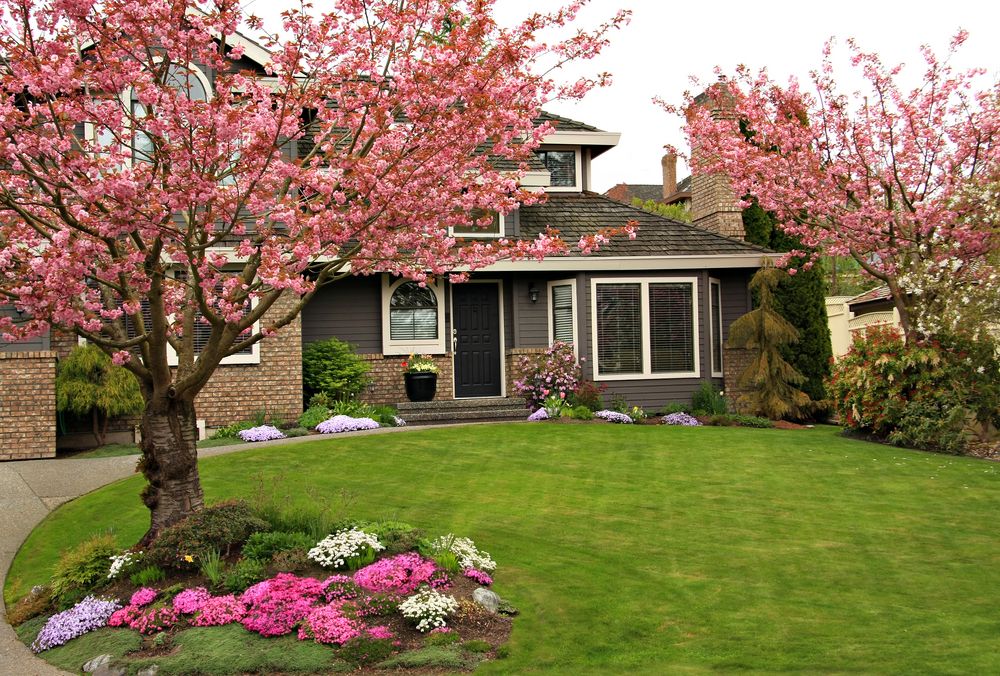 First of all, pay attention to the species that have always grown in your area. If you want exotic novelties, contact your local nursery, experts will give you advice on which varieties can survive in your conditions. At the same time, keep in mind that rare breeds require careful care. Do you have enough time and energy to properly grow a capricious tree? nine0003
First of all, pay attention to the species that have always grown in your area. If you want exotic novelties, contact your local nursery, experts will give you advice on which varieties can survive in your conditions. At the same time, keep in mind that rare breeds require careful care. Do you have enough time and energy to properly grow a capricious tree? nine0003
Features of the soil and relief also make their own adjustments. Not every tree can survive in a swamp, on a stone cliff covered with a thin layer of rocky soil, or on steep northern slopes. Ground waters are distinguished by great insidiousness. The seedling will take root perfectly, will grow for several years, but will die as soon as the roots grow to a wet layer. You can arrange good drainage, dig huge pits in rocky ground and fill them with fertile soil - the tree will still feel bad. Think about whether these efforts are worth a bucket of fruit, maybe it would be right to plant other species, and buy a bucket of peaches on the market. nine0003
nine0003
How many trees will fit on the lot
Any site is not unlimited and can accommodate a certain number of trees and tall shrubs. If you plant fruit crops too close together to save space, they will grow oppressed, often get sick and produce a poor harvest. Remember that trees should be planted at a distance of at least 5 m from one another, and there should be at least 3 m between tall shrubs.
In small areas, it will be correct to give preference to the columnar shape. The crown of these trees has the appearance of a neat column, takes up little space and facilitates maintenance. Trees on dwarf rootstocks are very convenient. When harvesting from low plantations, you do not have to pretend to be a stuntman, trying to reach an apple hanging at a height of ten meters. nine0003
When calculating the number of trees of one species, it should be taken into account that some species, such as cherries and sweet cherries, grow only in groups. If you do not really like these berries, do not plant one cherry tree on the site, it is better to completely abandon such plants.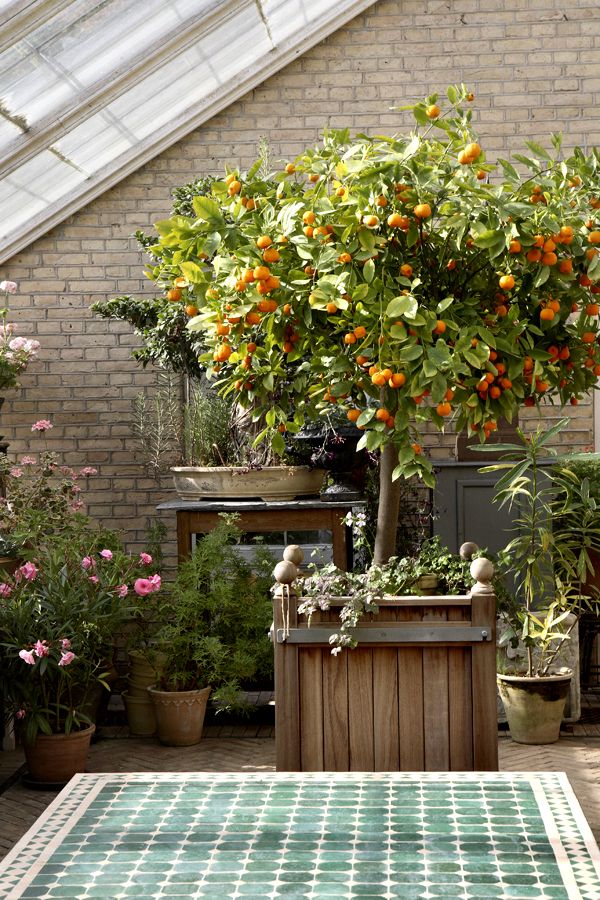 Some species, such as walnuts, do not tolerate the neighborhood of other species and will oppress the apple trees and peaches planted around it.
Some species, such as walnuts, do not tolerate the neighborhood of other species and will oppress the apple trees and peaches planted around it.
Landing around the perimeter of the cottage
When planting tall crops near the boundary of the plot, you enter into legislative relations with your neighbors. A beautiful young linden in a few years will grow to 30 m, develop a lush crown and shade half of someone else's territory. If you want to have tall trees, plant them on the south side of the recreation and picnic area, where they will create a pleasant coolness in the summer heat. nine0003
For hedges, dwarf trees or shrubs up to 2 m are suitable. When planting tall species, choose ones that tolerate shearing well, and you can always shorten them to the norm.
A good fence will come from the following bushes:
- lilac;
- hawthorn;
- juniper;
- barberry;
- dwarf spruce.
The side facing a busy road can also be fenced off with tall trees. A lush crown will protect the site from noise, dust and exhaust gases. In this place, it is not recommended to plant fruit crops or plants whose leaves and flowers you are going to use for medicinal purposes. nine0003
A lush crown will protect the site from noise, dust and exhaust gases. In this place, it is not recommended to plant fruit crops or plants whose leaves and flowers you are going to use for medicinal purposes. nine0003
Orchard
Even in the smallest plot, fruit trees are sure to grow. When laying a garden, an inexperienced summer resident may choose the wrong breed. As a result, the main area will be occupied by crops whose fruits you do not particularly need, and there will be little room for the most important fruits. Before buying seedlings, think, do you need 20 cherries? In a few years, they will give such a harvest that it will be enough for a whole microdistrict. If you want to grow berries for commercial purposes, then do it, but one family does not need so many fruits. nine0003
You have already determined how many fruit trees and shrubs will fit on the plot. Now make a list of the breeds you want to plant. In the first line, mark the most reliable and necessary, for example, an apple tree.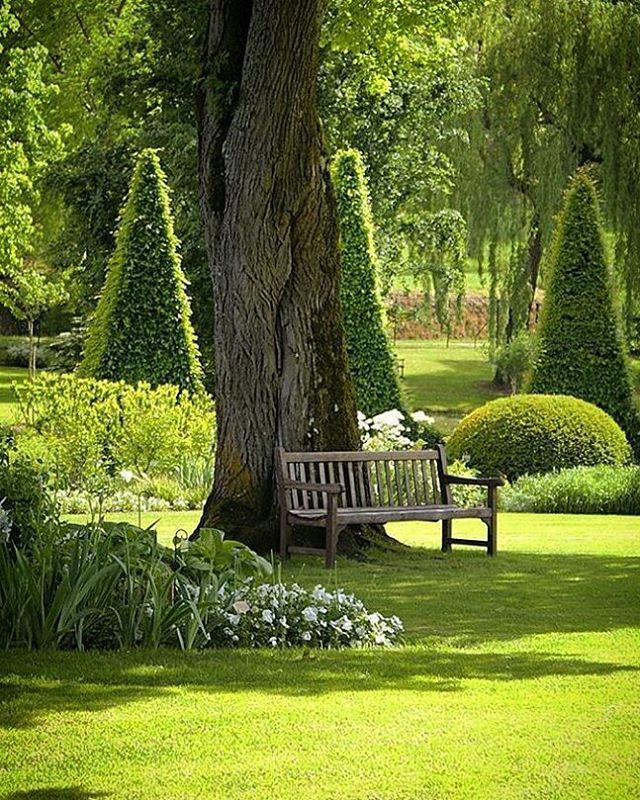 The next item will go to crops of lesser importance, and the list of plantings that can be dispensed with is closed. Also last, take trees that are poorly adapted to the natural and climatic conditions of your site. Purchases start from the top line and move down. In this way, you will correctly set up a garden that is guaranteed to provide you with the most necessary fruits. nine0003
The next item will go to crops of lesser importance, and the list of plantings that can be dispensed with is closed. Also last, take trees that are poorly adapted to the natural and climatic conditions of your site. Purchases start from the top line and move down. In this way, you will correctly set up a garden that is guaranteed to provide you with the most necessary fruits. nine0003
Tip
If there is not enough space in the garden and you want to grow different types of apples or plums, use grafting. On one tree you will have branches with fruits of different varieties.
When space allows, you can experiment, try to grow exotic fruit trees. If you choose the right varieties and skillfully take care of the plantings, peaches will grow in the northern regions, and bananas and mangoes in the south. Only if you plant a plot with some rare crops, you risk being completely without a crop. nine0003
In any garden, it is desirable to have several varieties of the following crops:
- apple trees;
- pears;
- plums;
- cherries;
- mountain ash;
- sea buckthorn.
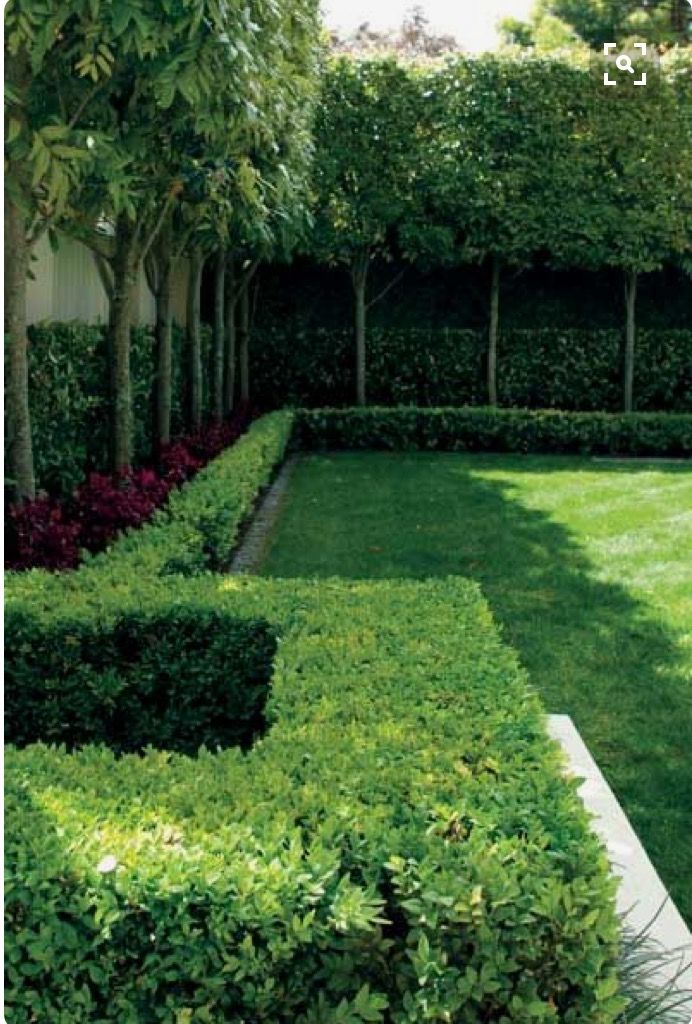
Decorative plantings
At the cottage, you can plant not only fruit trees, but also ornamental species. A birch at the gate, a mountain ash under the window, a cypress alley will give the site individuality and create a good mood. If the area allows, you can arrange a small forest with a barbecue, a fire for picnics. Strawberries will grow in an open clearing, wild garlic in the shade. If you want to plant mushrooms, keep in mind that each species loves its own tree. Butterflies and mushrooms grow well under Christmas trees, aspen and boletus - in deciduous forests. nine0003
When planting trees on the site, one should not forget about the safety of the hosts and guests. Do not grow poisonous plants. Breeds with fragile wood should be located away from houses and paths: in strong winds, a large branch can break off and fall on a person or knock out a window. When planting trees near buildings, it must be taken into account that plants with strong roots destroy the foundation over time.
If you believe in horoscopes and folk signs, you can decorate the site in accordance with magical recommendations. Sometimes these tips contradict each other. There is only one way out: trust your intuition. Hold a seedling in your hands, imagine it as a mature tree on your site and think about how you feel about it. It is believed that willow and willow have no place in the garden, they symbolize suffering and death. But if in your dreams a pond surrounded by these thickets is associated with happiness, romantic feelings, peace - create such a corner, the plants will not bring you anything bad. nine0003
To decorate the landscape, you can dig up trees or shrubs growing in the nearest forest, or purchase specially bred ornamental species. From ordinary spruce, breeders have created many varieties with a wide variety of needle colors.
To create a design, you can use:
- chestnut;
- acacia;
- oak;
- spruce;
- larch;
- cypress;
- palm;
- bird cherry; nine0005 mountain ash;
- birch.

How to plant trees
The best time for planting ornamental and stone fruit trees is early spring. It is desirable that the seedlings have not yet begun to produce leaves. Seed crops - apple, pear - should be planted in the fall. The age of the seedling is 1-2 years. Young trees tolerate transplanting more easily, take root quickly. It is advisable not to order trees from remote regions, but to purchase from a local nursery, then you will be sure that this species can live in your climate. nine0003
You have brought seedlings, now you need to mark the holes. Try to place plantings so that the tallest trees are on the north side of the garden, and the dwarf ones are on the south, then everyone will have enough sun.
Each breed has its own subtleties of landing, but there are general rules.
- The hole must be large enough to fit the roots freely.
- Fill the bottom with sand or gravel for drainage.
- When backfilling, first of all, the top fertile layer of soil is thrown onto the roots.
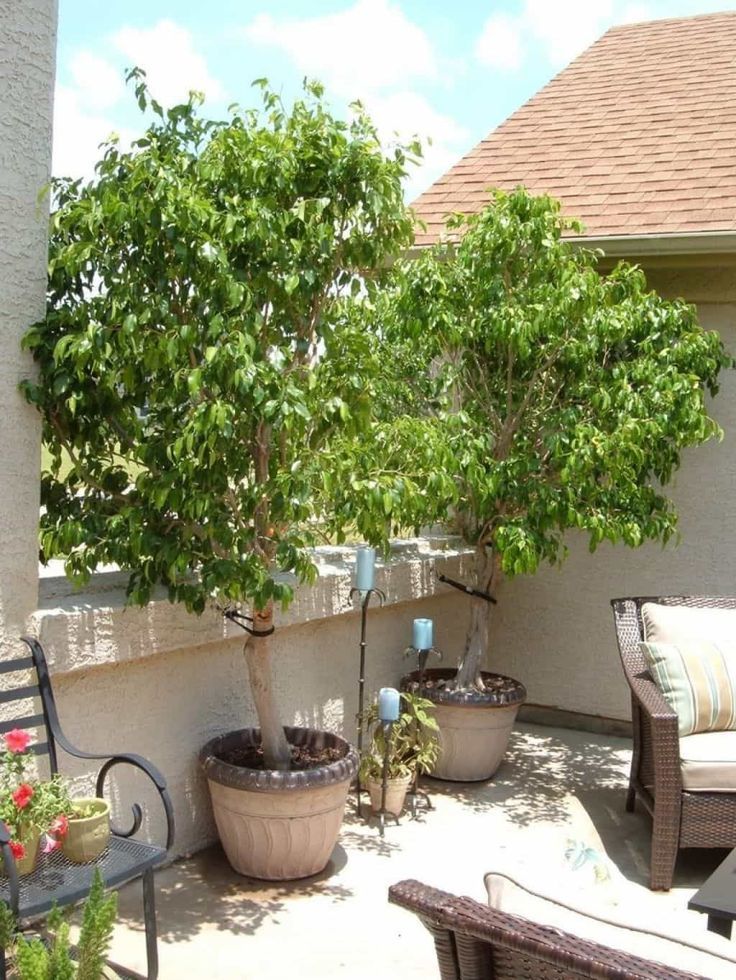 nine0006
nine0006 - The grafting site should be a few centimeters above ground level.
- The planted tree must be tied to a stake firmly fixed so that it does not sway in the wind.
After planting, be careful with the young tree. Shade it before rooting and keep the soil moist. It will be correct to add hydrogel to the soil when planting, it regulates soil moisture both in drought and during prolonged rains. Be sure to mulch the trunk circle, then loosening and weeding will not be required, and you will not disturb the finely located roots. nine0003
Output
In the summer cottage, first of all, you need to plant trees that grow well and bear fruit in your conditions. If there is not enough space for ornamental crops, you can make an apple or cherry alley, surround a recreation area with fruit crops. Exotic crops are best planted if there is free space and time for complex care.
When planting, consider crop compatibility. Some varieties do not set fruit at all if there is no tree of a similar type nearby.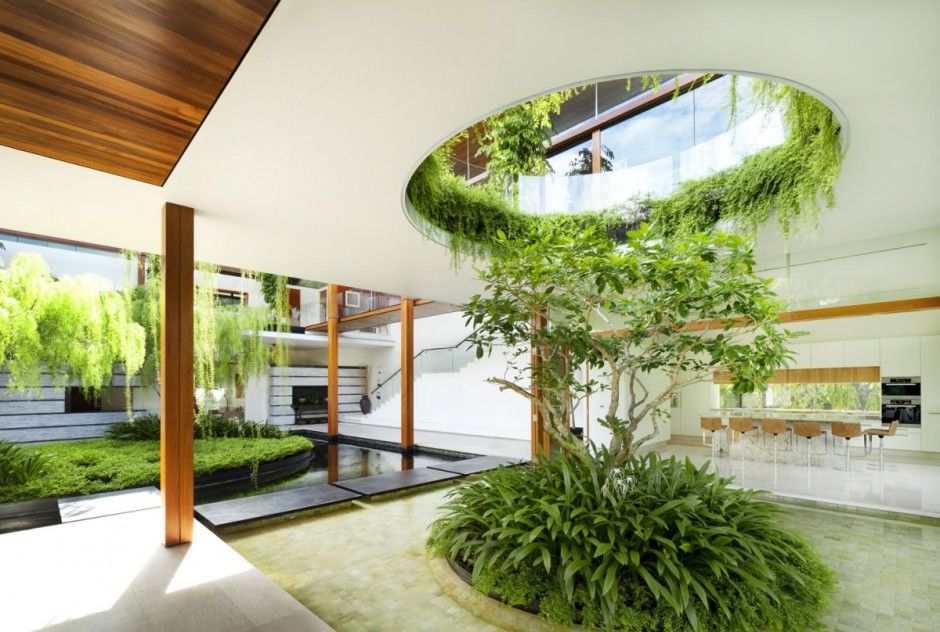 Cherries and sweet cherries alone will give a meager harvest. If you are afraid that you yourself will not be able to cope with this work, contact the specialists. A qualified team will properly green the site, you just have to take care of the plants and harvest. nine0003
Cherries and sweet cherries alone will give a meager harvest. If you are afraid that you yourself will not be able to cope with this work, contact the specialists. A qualified team will properly green the site, you just have to take care of the plants and harvest. nine0003
6 trees for a mini-garden in the apartment
Many people love to use trees as part of the interior of their homes. Each of us at least once in our lives saw either a tub with a palm tree, or a ficus up to the ceiling, or the pride of the owners - a huge Chinese rose, languishing alone in the corner of the room.
Plants in the house perform several important functions at once, including moistening the air and saturating it with oxygen. In addition, it is with the help of a small tree in a pot that you can add zest to the room and add exotic notes. Moreover, today you can find a tree for every taste and budget - there would be a desire! nine0003
In an effort to get a double benefit, today people prefer to grow mainly fruit trees in their homes.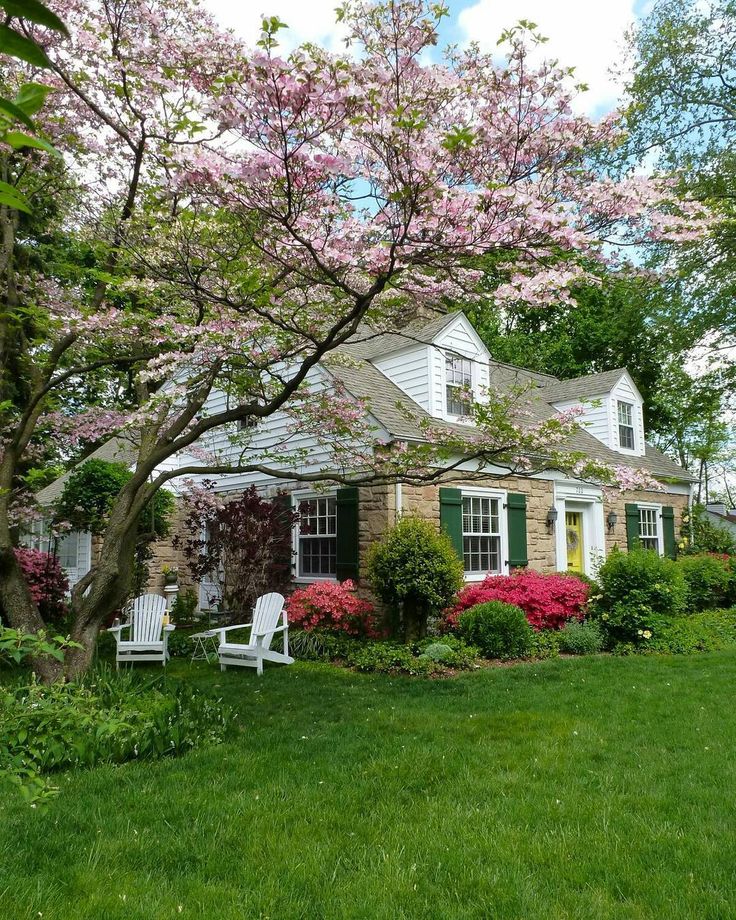 Such trees are not only pleasing to the eye, but even with proper care they bring quite edible fruits.
Such trees are not only pleasing to the eye, but even with proper care they bring quite edible fruits.
And what are those trees?
How to grow an avocado from a seed at home
Those who love avocados can kill two birds with one stone by planting this ornamental tree at home - and aesthetic needs will be satisfied, and juicy fruits will be obtained. True, not immediately, but we know that luck comes only to the patient! nine0003
In addition, avocado is an evergreen tree, which means that even in winter it will not shed its leaves and go into hibernation. In nature, it is able to reach a height of 20 meters. Of course, in a city apartment this is hardly possible, and it is not necessary.
You can grow a small avocado tree at home from a seed. To do this, you need a bone of a ripe fruit, a pot for planting and fertile soil. The bone cannot be placed in ordinary soil taken from the garden. Usually, for avocados, a soil mixture is prepared from peat (humus), earth from the garden and river sand - all in equal proportions.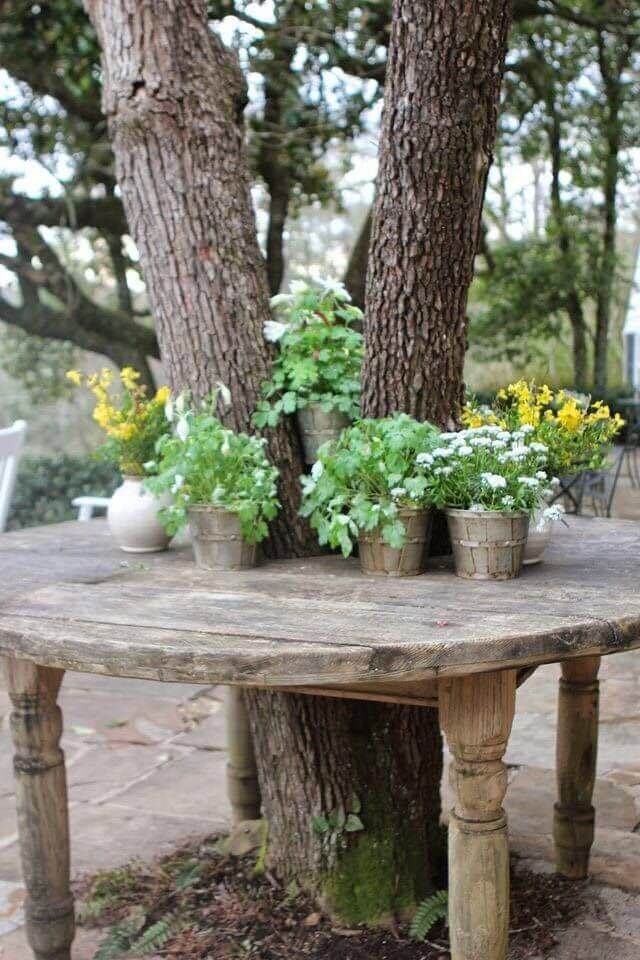 nine0003
nine0003
The avocado seed is planted at a depth of 3 cm. And then you need to provide the plant with high-quality, timely watering and a lot of light. The window sill on the west side is the best place. If you did everything right, then in about a month a sprout will appear.
For those who like an unconventional approach, there is another way to germinate an avocado seed. To do this, three holes are made in the central part of the bone. A toothpick is inserted into each of them to a depth of 3-5 mm. Next, the bone with a blunt end is immersed in water by a third, toothpicks will hold it on the surface of the glass. The water level should be the same all the time that is allotted for germination. nine0003
After the root system of the future tree reaches 3-4 cm, it is transplanted into a pot with drainage holes. The plant is planted in a fertilized soil mixture, the surface is not rammed. A tree needs light, but not direct sunlight. Avocado loves moisture, so it should be watered 3-4 times a week.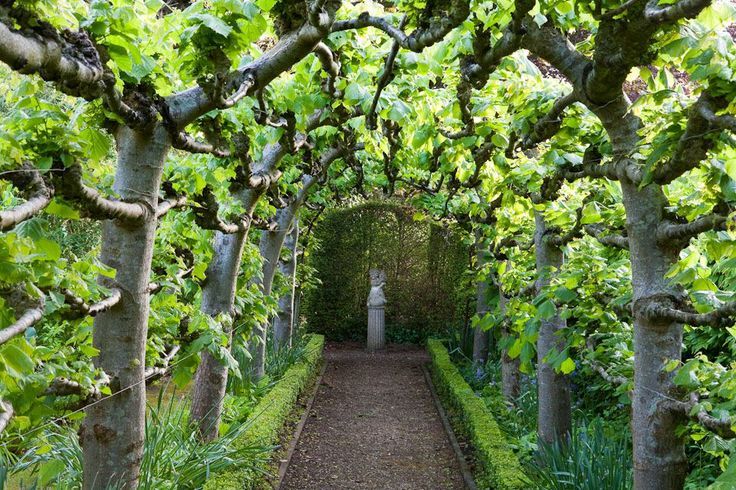 Experts recommend replanting avocados every year - you won’t even have time to look back, as the tree will become dough in an old pot! It needs to be transplanted when it reaches a height of 15 cm. The substrate (peat, soil and sand in equal proportions) should be fresh and loose. nine0003
Experts recommend replanting avocados every year - you won’t even have time to look back, as the tree will become dough in an old pot! It needs to be transplanted when it reaches a height of 15 cm. The substrate (peat, soil and sand in equal proportions) should be fresh and loose. nine0003
From time to time, avocados need to be fed with fertilizers that are designed for flowering ornamental plants, such as Biochelate. In spring and summer, a fertilizer solution (10 ml of the mixture per 2 liters of water) should be applied 2-3 times a month. In autumn and winter, top dressing is applied once a month.
How to grow citrus fruits (tangerine, orange, lemon) at home
Probably, each of us in childhood tried to grow an orange or a lemon by putting an orange seed in some pot with a home flower! It is clear that few people expected sprouts, and even more so, fruits. Although the idea itself is, of course, a good one - such a tree exudes a citrus aroma and looks amazing! Therefore, it is not surprising that even people far from floriculture try to grow a citrus tree at home. nine0003
nine0003
The easiest and most affordable way is to grow citrus fruits from the stone.
It is best to use the largest seeds for cultivation. They are cleaned, gently washed under the tap and then wrapped in damp gauze for 2-3 days. Before lowering the seeds into the soil, they are treated with a natural growth stimulator. Containers for planting citrus fruits should have drainage holes. Oranges, tangerines and lemons grow well in a substrate made from 1 part sand, 2 parts woodland and 2 parts humus. You can buy ready-made soil for citrus fruits in the store. nine0003
Seeds are planted in a container at a depth of 3 cm. For citrus fruits, it is important to maintain the greenhouse effect - for this, the flowerpot is covered with polyethylene, which is periodically lifted so that oxygen enters the soil. The first shoots of citrus fruits usually appear a month after planting.
After sprouts appear, the citrus tree can be fed. To do this, use formulations that have been developed specifically for citrus plants.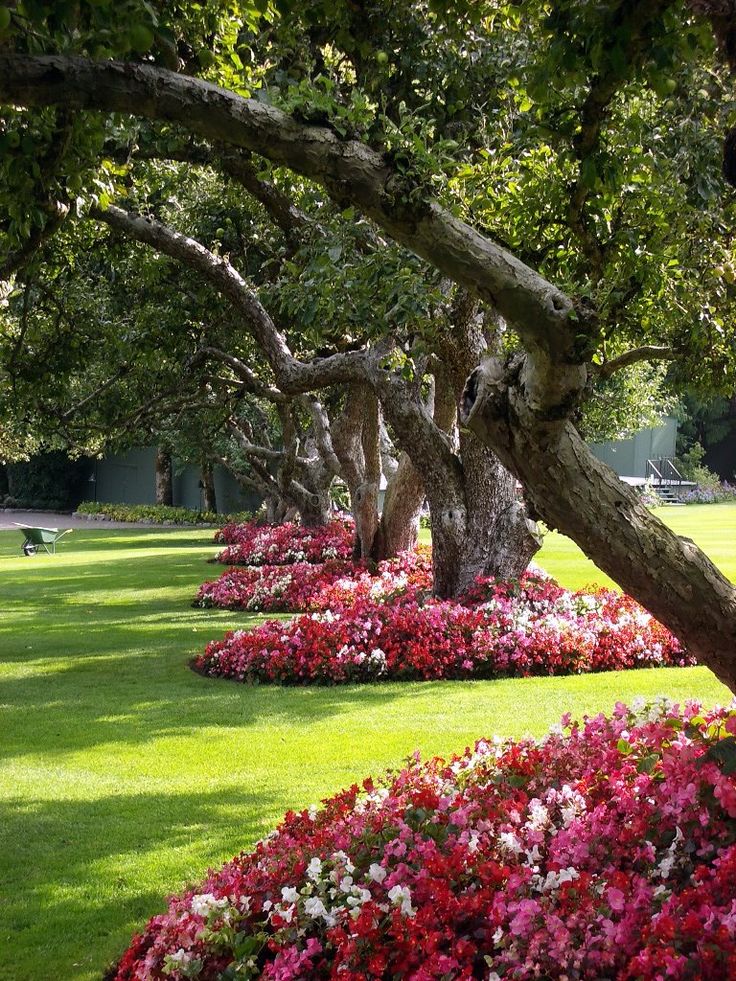 They are applied in accordance with the instructions on the package. To protect citrus fruits from pests - in particular, whiteflies and spider mites - the leaves are washed with a solution of Actellik (according to the instructions). As a rule, the procedure is repeated two more times, taking a week break between each. nine0003
They are applied in accordance with the instructions on the package. To protect citrus fruits from pests - in particular, whiteflies and spider mites - the leaves are washed with a solution of Actellik (according to the instructions). As a rule, the procedure is repeated two more times, taking a week break between each. nine0003
When the plant begins to bloom, it is important to observe the temperature regime. So, oranges and tangerines need an air temperature of 22-25 ° C for good flowering. Lemon in this part is not particularly whimsical and can actively bloom even at 16-18 ° C. In general, the temperature regime should depend on the season - in summer the temperature increases, and in winter it decreases. This will increase your chances of getting a crop.
Citrus trees need abundant watering. In summer, you need to water oranges, tangerines and lemons every day, in winter - a couple of times a week. nine0003
It is recommended to repot citrus fruits every three years - they grow and there is not enough space for them in an old flowerpot.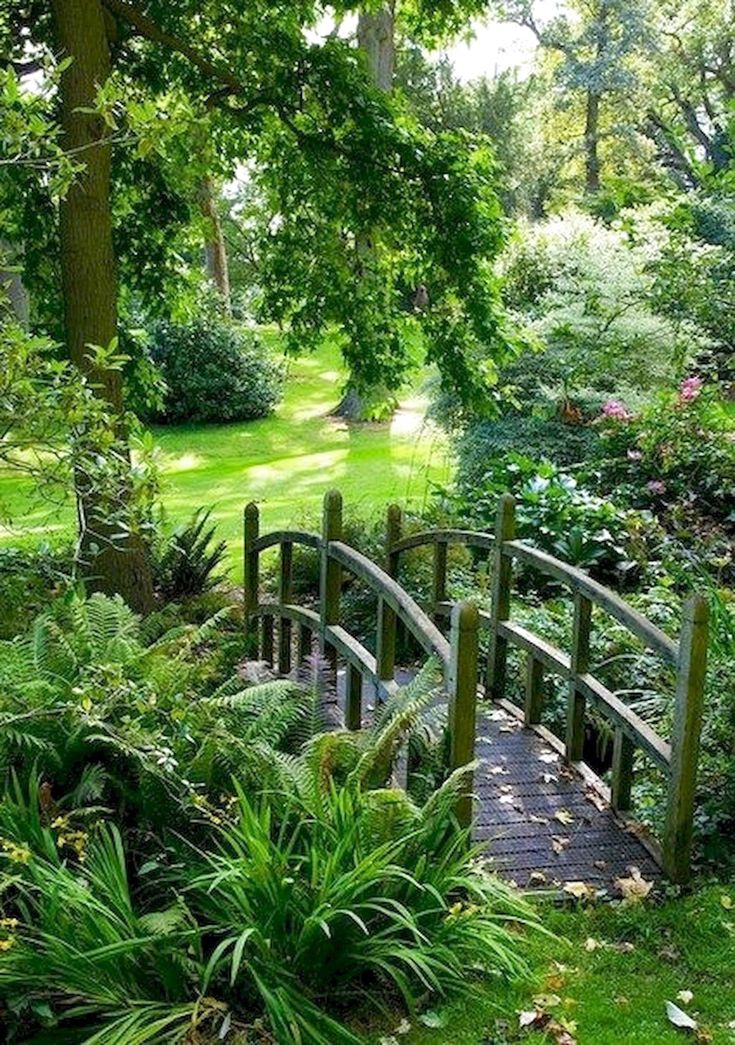 For transplantation, a fresh substrate is prepared, which consists of sod, leaf and humus soil in a ratio of 2: 1: 1, mixed with one part of sand.
For transplantation, a fresh substrate is prepared, which consists of sod, leaf and humus soil in a ratio of 2: 1: 1, mixed with one part of sand.
How to grow a coffee tree at home
If growing a lemon or an orange from a stone seems like a very banal thing to someone, you can try growing a coffee tree. True, there is one caveat here: coffee beans, which we pour into a coffee machine in large quantities, are unlikely to work. It is best to ask for a couple of brown-red unripe coffee fruits from those who already have such a tree. nine0003
To get to the unripe beans, the coffee fruit must be peeled and the pulp removed. Both halves of the grain can be used as planting material. They need to be washed with water under the tap, and then held for half an hour in a weak solution of potassium permanganate. Then the seeds are planted in a container with drainage holes and loose soil to a depth of 1 cm.
The coffee tree is quite picky and prefers to grow in acidic soil. Therefore, the substrate for it is prepared from acid peat, which is mixed in equal parts with humus, wood ash and sand. In order to increase humidity and at the same time add acidity to the soil, sphagnum moss is sometimes used, which is pre-crushed. nine0003
Therefore, the substrate for it is prepared from acid peat, which is mixed in equal parts with humus, wood ash and sand. In order to increase humidity and at the same time add acidity to the soil, sphagnum moss is sometimes used, which is pre-crushed. nine0003
The container is placed in a place that is well illuminated by the sun, providing the future plant with a temperature of at least 20 ° C. Usually, pots with coffee tree sprouts are placed on windowsills on the sunny side, covered with a jar on top to create a greenhouse effect. But with prolonged heat, it is better to rearrange them in a cooler place so that direct sunlight does not fall on the plant.
When growing a coffee tree, you need to choose the right pot. Of course, a coffee tree will grow in a small pot, but it is unlikely to bloom. nine0003
The coffee tree has a capricious nature and requires soil replacement every year until it is five years old. Before you start transplanting, apply fertilizer to the soil - 20 g of bone meal or horn shavings per 1 kg of soil.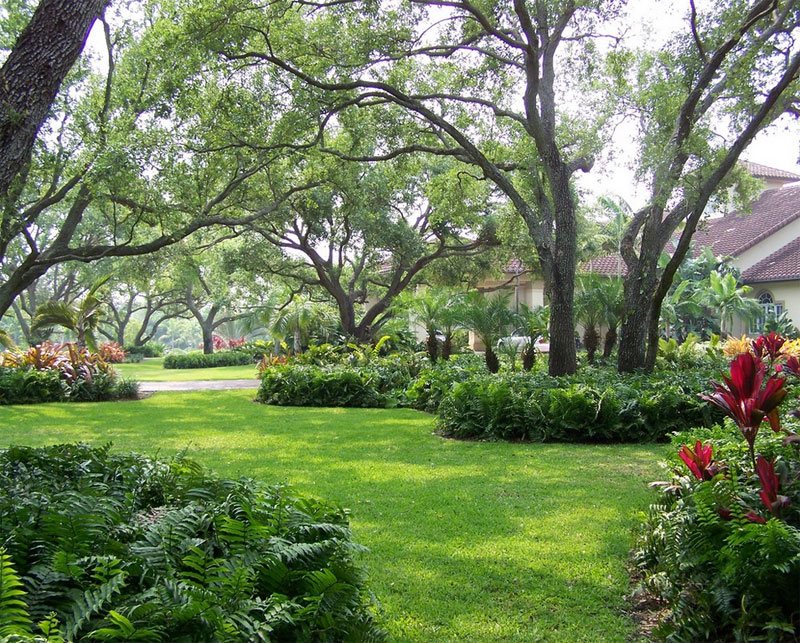
After five years, the tree has less need for annual soil replacement, and you can just relax and enjoy its magnificent view.
How to grow dwarf pomegranate at home
Despite the fact that this tree can easily decorate absolutely any interior, few people dare to grow pomegranate at home. Nevertheless, this is a beautiful tree with a long flowering period - from April to September. Its flowers can be red, white, yellow or pink - it depends on the variety. nine0003
Only those seeds that can be collected from its flower are suitable for growing pomegranates at home. Unfortunately, pomegranate seeds are not suitable for this purpose. Therefore, in this case, planting material will have to be bought.
Purchased seeds are pre-soaked for a day in a solution of Kornevin or other growth stimulator. Then they are planted in loose soil to a depth of 0.5 cm, watered and covered with glass. Sprouts should appear in less than a month. After the seeds germinate, they need to be transplanted into small containers that provide drainage.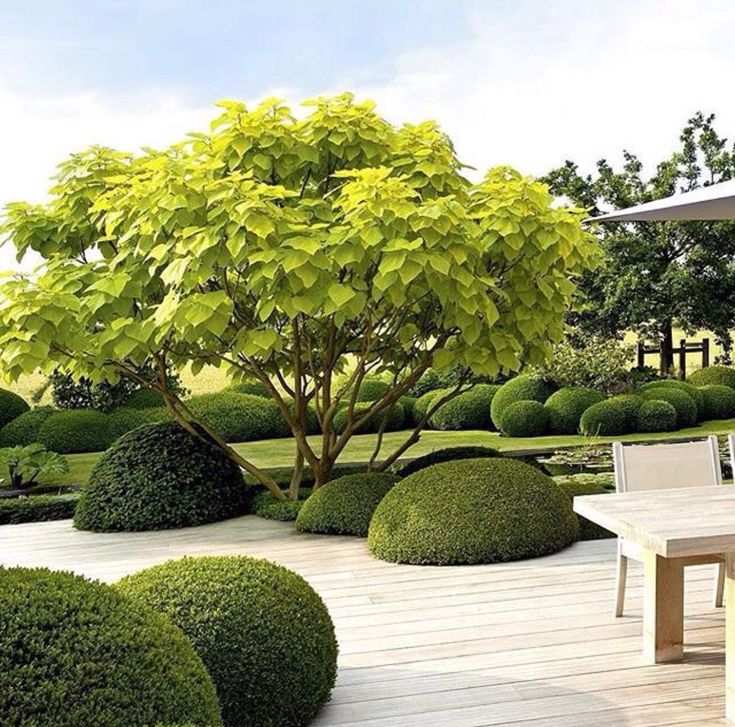 nine0003
nine0003
The best soil for dwarf pomegranate is rose or begonia soil.
The grenade needs a lot of light. If there is not enough light, the tree will drop its leaves in protest. Comfortable temperature for pomegranate - 25 ° C. In order to provide the plant with a winter dormant period, it is kept at a temperature of 10 ° C for a month. Water the pomegranate once a week. As a rule, you need to water when you notice that the topsoil crumbles under your fingers. For spraying pomegranate use only warm water. nine0003
For good growth and flowering, pomegranates are fertilized from autumn to spring. To do this, use a solution of mullein (first prepare an infusion in the proportion of 1 kg per 10 liters of water, which is kept for 5-7 days, and then diluted with water 1: 3 and used for irrigation). Very useful for indoor pomegranate infusion of chicken manure. It is prepared as follows: litter is poured with water in a ratio of 1: 2, the container is tightly closed and left in a warm place for fermentation.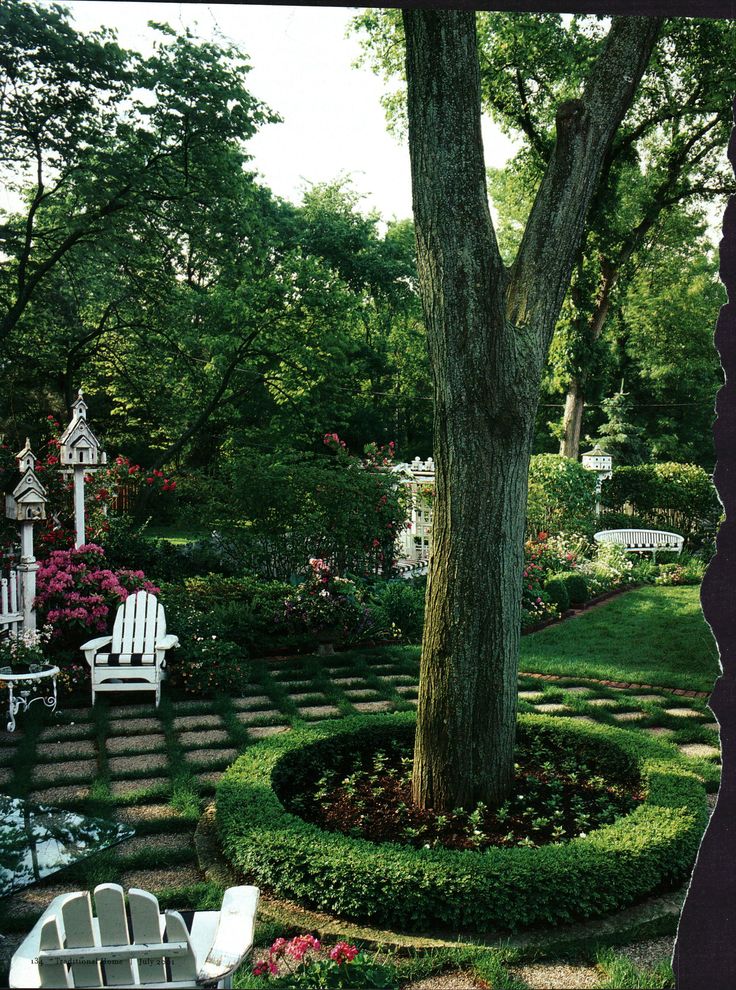 After 2-3 weeks, open and dilute the infusion with water 1:25. Ready fertilizer is applied immediately after watering. nine0003
After 2-3 weeks, open and dilute the infusion with water 1:25. Ready fertilizer is applied immediately after watering. nine0003
Florists recommend replanting pomegranates once every 3-5 years. For the substrate, you will need 2 parts of soddy land, 1 part of leaf humus, half of the peat and half of the sand. Sometimes sand, loam and peat are mixed - 2: 1: 1, respectively. For pomegranate, a substrate of 2 parts of clay-soddy soil with the addition of leafy earth, humus and sand in equal amounts is also suitable.
If you did everything right, then in five years the tree will please you with the first harvest. For especially successful gardeners, the pomegranate begins to bear fruit after three years of growth. nine0003
How to grow potted cherries at home
Cherry on the windowsill is no longer surprising, and everyone treats it as something familiar and ordinary. Growing such a tree is quite simple and convenient. True, for this purpose they use the evergreen Barbados cherry - it almost does not differ in taste from the usual one, and it is much easier to grow it at home than the cherry that everyone knows.
Planting cherries at home is easy: just stick the prepared, washed stone into a moistened and fertilized soil mixture. After that, the container with the bone is placed on the windowsill, where it is sunny and warm, and they begin to expect shoots. nine0003
Perhaps the most important advantage of the plant is that it is unpretentious and tolerates both bright sun and shade. In summer, it is enough for a temperature in the range of 18-22 ° C, in winter - 15 ° C. Only warm water is suitable for watering cherries. In summer, the plant is watered three times a week, in winter - less often.
The tree needs to be replanted once every 2-3 years. This mixture is best suited for cherries: peat, leafy soil and turf in equal proportions, mixed with a fifth of the sand. If you want to quickly taste the fruits, feed the cherries every month with a suitable "mineral water". This should be done from February to October, for this you can use liquid humic fertilizer Living Force: for fruit and berry crops. Fertilizer is applied 2 times a month, strictly following the instructions on the package. In winter, it is enough to "treat" cherries once a month. nine0003
Fertilizer is applied 2 times a month, strictly following the instructions on the package. In winter, it is enough to "treat" cherries once a month. nine0003
How to grow pineapple at home
Pineapple can hardly be called a tree, but it can also decorate the interior, so we included it in our list. Pineapple is beautiful during flowering, and if you take good care of it, then after five years you can taste it.
In order to grow a pineapple at home, you need to cut off its top. It is placed in a pre-prepared soil mixture - peat and sand in equal proportions. Cover the top of the pineapple with a jar or plastic bag to retain moisture. After the top takes root and the bush grows, it is transplanted into a large, but shallow container. The soil for transplantation is prepared as follows: sand, turf and leaf humus are mixed in equal parts. It is important for pineapple that there is a lot of space - only if this condition is met, fruits can be expected from it in the future. nine0003
nine0003
Pineapple is afraid of the cold, so the maximum coldest temperature in the room where it is grown should be 18°C. Ideally, it is better to keep the temperature for it at 25 ° C. As a rule, a pineapple will not always have enough sunlight, so in winter, provide it with additional lighting with a fluorescent lamp.
Pineapple needs additional nutrition, so gardeners recommend feeding it with organic fertilizer once a month. It is best to use mullein for this purpose (we described in detail the recipe for its preparation in the section on growing pomegranate). During active periods of growth and development of pineapple, 2 times a month, you can apply mineral fertilizers like a Flower or a Rainbow, clearly following the rules indicated in the instructions. nine0003
It is enough to water an adult pineapple once a week. Water for irrigation is taken warm, separated. Ideally, if it is rain or melt water. In most cases, boiled water with a pinch of citric acid is used to water pineapple.